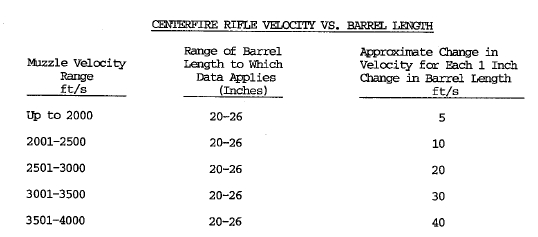


The Magical Mysterious .270 Winchester Cartridge

Background
The .45-70 Government was replaced by the .38-40 Krag in 1892 as the standard U.S. military long gun. The Springfield Model 1892 was the result of the 1892 competition of some forty-five different designs seeking to replace the Springfield Trapdoor. It was the first smokeless cartridge rifle adopted by the U.S and the first bolt action. It survived as the U.S. Army's primary rifle from only 1892-1903.
From 1894 to September 1899 it used a 220 grain bullet at about 2000 fps. Considered second rate to the Mauser 1892 action, it proved to be a deadly embarrassment in the Spanish-American War to the United States compared to the Spanish Mausers. The result was the .30-03 that was adopted for only one year by the U.S. It was from the .30-03 cartridge, that originally threw a 220 grain slug at 2300 fps, that the .270 Winchester was designed from.
Released in 1925 along with the Winchester Model 54 rifle, the .270 Winchester never was a “twenty-seven caliber,” it has always had a .277 bullet diameter. The 7mm Remington Magnum of 1962 uses a .284 diameter bullet, as does the 7mm-08 Remington of 1980. We should all wonder a bit why seven thousandths of bullet diameter is supposed to matter a huge amount? Of course, it never has.
Barrel length matters, but for the longest time home chronographs weren't common and the average fellow relied on what the box said or what the catalog said. That's never a good idea. Ed Matunas lamented in Metallic Cartridge Reloading (2nd ed. ,1988) that the .270 "is not well served by factory ammunition. Velocities often vary widely and frequently are well below advertised levels." I've found that to be true in a wide variety of cartridges, certainly not limited to the .270 Winchester. Ammunition is only part of the issue, for lab data derived from 24 inch test barrels is invariably higher than the common 22 inch or shorter barrels, and we aren't always shooting at laboratory temperatures, either.
The .270 Winchester is often considered a moderate recoil load, but of course a cartridge alone has nothing to do with recoil, as it isn't used by itself. Rifle weight has everything to do with it and for starters, we may well have 7-1/2 lb. hunting rifles unscoped, unslinged, unloaded. Add it all together and we can quickly have a 10 pound rifle without extraordinary effort.
Though the .270 Winchester is sometimes referred to as a “small bore” itself along with 7mm bullets, it is a matter of perspective. Some of the most illuminating terminal ballistics information can be found at http://www.rathcoombe.net . You'll quickly be convinced that the .223 Remington is inadequate for big game and the .243 Remington doesn't look all that good, either.

Is the .270 Underrated?
Despite the celebration of the .270 by Jack O'Connor, the answer is both yes and no. The John Nosler Partition, for example, wasn't released until 1948.Tough bullets able to withstand high impact velocities weren't generally used until the 1960s. High ballistic coefficient bullets were not common until the 1980s. It wasn't until 1974 that Federal Cartridge offered commercially loaded Nosler Partitions. The Nosler Accubond wasn't introduced until 2003.
The alleged 3060 fps 130 grain muzzle velocity was not often achieved, due to weak factory ammunition and shorter than the laboratory 24 inch barrels. Now, you have loads like the Hornady Superformance line that offers 3200 fps muzzle velocities, along with static G1 ballistic coefficients of .460. The recommended operating ranges of hunting bullets often begins at 2000 fps. Now, there are factory 130 grain loads that stay above 2200 fps past 500 yards. This is quite a jump from the still available 150 grain soft point round nose ammo with a B.C. of .242 that drops to 1871 fps at 300 yards and 1606 fps at 400 yards.
While underrated isn't the precise word, not fully exploited is a bit more accurate. Higher muzzle velocity by itself isn't important, but combined with a tough higher B.C. bullet it yields the important number, strike velocity, and although ballistic coefficient alone never has dropped much of anything, it has great value in reducing the great variable of wind drift. Some loads can blow over a foot at 300 yards with just a 10 mph crosswind.
Now, we have factory loads with 5.7 inches of drop from 200 to 300 yards, and 5.43 inches of 10 mph wind drift at 300 yards, less than half that of some previous loads. While it hardly transforms the .270 into the Belchfire Super Snorter Mark IV, it enables higher strike velocities and makes 300 - 350 yard shot placement easier. Rather than designating the .270 as underrated, it is more appropriate to say that it has been significantly improved by tougher bullets, more aerodynamic bullets, higher velocities, less wind drift, and of this augmented by more accurate factory rifles.
It wasn't underrated by Jack O'Connor, of course, who considered it a 375 yard deer rifle with average loads, and used it with 130 and 150 grain bullets to take grizzly, moose, and so forth. In the case of elk, O'Connor took more with the .270 than any other cartridge (The Art of Big Game Hunting in North America, 1967.) Whatever it was in 1967, it is a bit better today.
The Inaccurate .270?
Jim Carmichel wrote, in Outdoor Life (“The .270 Mystery”): “Mainly we tested the newer, top-of-the-line offerings with popular styles of bullets ranging from 130 to 150 grains. It was fascinating to discover the wide differences in accuracy within a particular brand. For example, while Winchester's Supreme-grade load with 130-grain Ballistic Silvertip averaged a tidy 1.114 inches, the 140-grain Fail Safe load could do no better than 2.700 inches. Across the spectrum of factory-loaded ammo, groups tended to range in the 2-to-2½-inch category. It was almost as if the ammo industry had decreed that the accuracy of .270 cartridges should be about 2½ inches-no better, no worse.” Purported to be the most extensive test of .270 Winchester accuracy ever conducted, the end result was a complaint about factory ammunition, as most handloads (130 – 150 grain) grouped less than an inch at 100 yards. Sierra Varminter and Speer TNT 90 grain bullet handloads, at over 3400 fps, approached one half inch.
The ammunition-insensitive rifle is hard to find. The more correct statement is that the .270 Winchester has not been particularly championed or embraced by target shooters, as it lacks the built-in appeal of U.S. Military and NATO chamberings. It has been championed for hunting, though, and that's where its primary appeal still resides.
Is the .270 Winchester Good, Better, Perhaps the Best?
We are all prisoners of our own personal experiences to a certain extent and I'm no more immune from it than anyone else. With a 150 grain CT Partition, I used it to drop a tasty Newfoundland moose at 435 yards. What the .270 Winchester is, today, is one of the best and most available methods of hunting with a 130 grain bullet at 3100 – 3200 fps. Not only is the ammunition widely available, but so are the rifles as opposed to some chamberings (the various short magnums) that have vanished from the lines of many popular makes of rifles.
While moderate in recoil, with the better 130 grain commercial loads (Hornady Superformance) the drop from 200 to 300 yards is 5.7 inches, the drop from 200 to 400 yards 16.7 inches. That is markedly superior to most 7mm RemMag hunting loads. Even compared to a Hornady Superformance 7mm RemMag 139 grain SST, the difference in drop from 200 to 300 yards is a puny two tenths of one inch.
We
all have our favorites, there is no clever formula for that, but the .270
Winchester is one of the best and better than the rest for the vast majority
of non-dangerous game, big game hunting. Whatever Jack O'Connor found
exceptional about the .270, it is even more exceptional today. Perhaps
there is something magical and mysterious about it after all.
©1999 - 2013 Randy Wakeman. All Rights Reserved.


